ID-DOC: general search
Here you can enter a general keyword and perform a general search.
??? What are these question marks doing here? These represent tools which we know by a Dutch or French name, but who's English name is yet unknown. Suggestions are always welcome!
If you cannot find a certain tool, or if you experience other problems with this page, please let us know at info@mot.be.
Search for: tool
Showing search results 1,351 - 1,400
1,492 results found
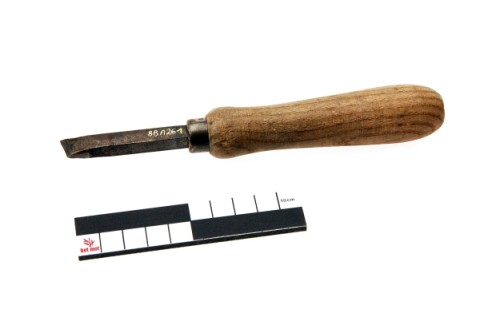
Tile scriber
This text can only be consulted in Dutch
<https://www.mot.be/resource/Tool/370?lang=nl>
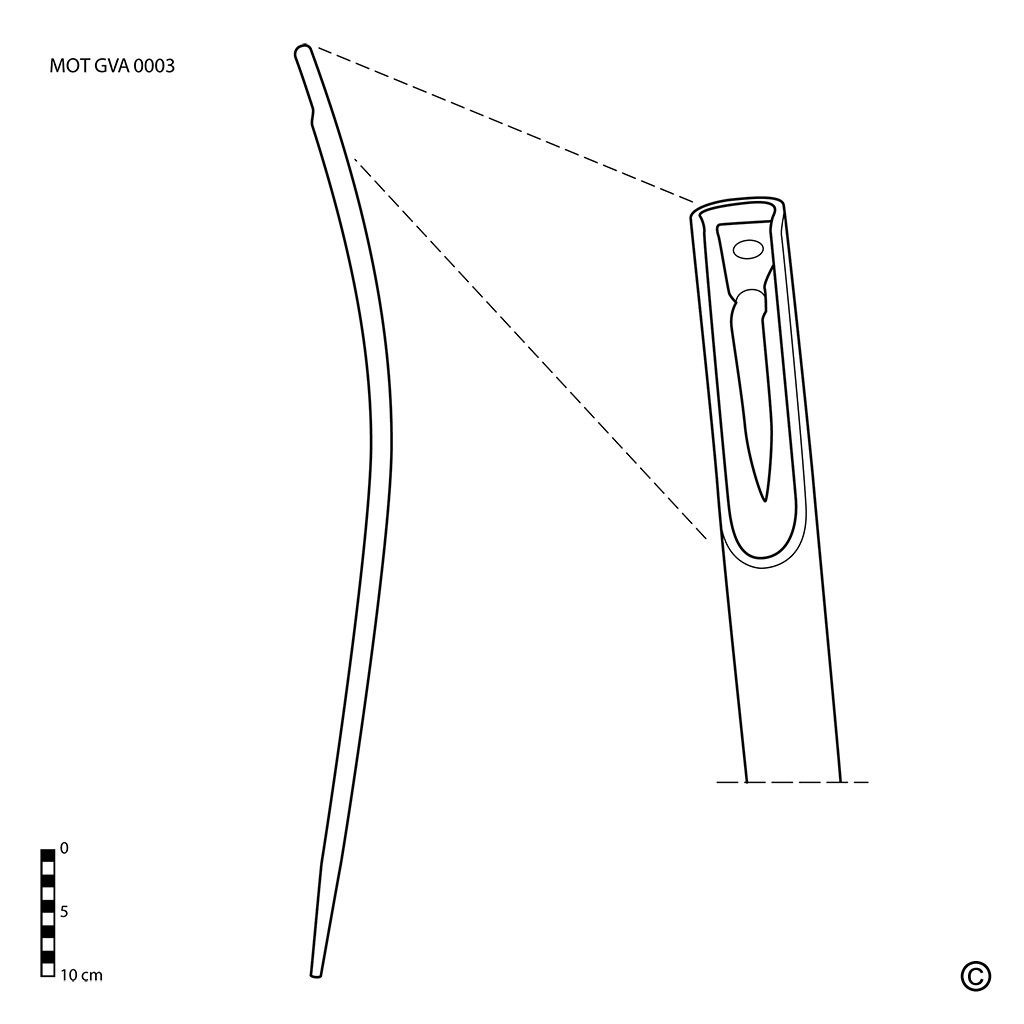
Timber girthing sword
This text can only be consulted in Dutch
<https://www.mot.be/resource/Tool/timber-girthing-sword?lang=nl>
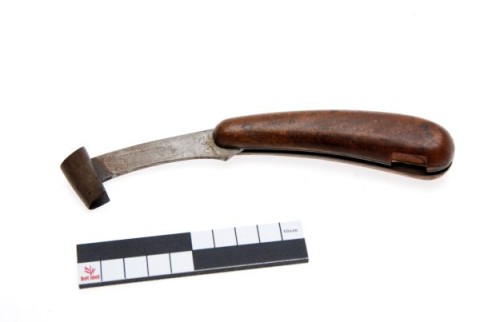
Timber scribe
The timber scribe is used to mark trees to be felled by cutting a strip of
bark, also to indicate - when unloading a ship - the number of beams of a
raft (1). The timber scribe has a metal blade with a U-shaped end and a
wooden or horn handle of 10-15 cm. One side of the U is sharp (cf. clog
maker's scribe, beam scribe, rubber tapping knife). Some timber scribes
have a foldable blade and some sort of plate to protect the hand. See also
the hoof cleaning knife. [MOT] (1) JANSEN: 117.
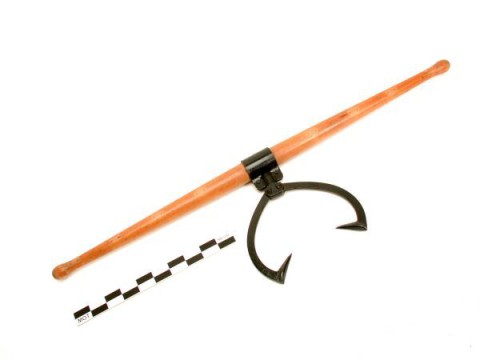
Timber tongs (1 handled) / lifting tongs (2 handled)
The lifting tongs are a hand tool for carrying or towing relatively light
tree trunks, telephone poles, etc. The lifting tongs for two men consists
of two metal hooks that are hinged to each other and are attached to the
center of a wooden stick (approx. 100-150 cm). Often the hooks can also
rotate. The stick is grasped by two men walking on either side of the
trunk. Due to the weight, the points stick into the wood. The pole should
be about one meter longer than the center line of the trunks to prevent the
legs of the porters from rubbing against it. The timber tongs for one man
are a small tool (approx. 30 cm) with a number of interacting levers
between handle and hooks (approx. 10 cm). It is operated by one man and is
used to carry relatively short pieces. The tool can be distinguished from
the tie tongs for rails and the wood hook. [MOT]
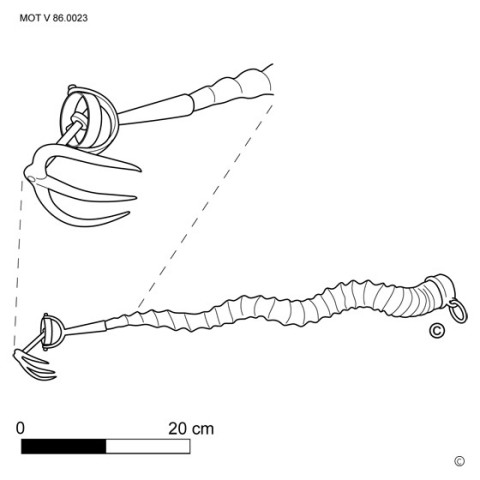
Toasting fork
This text can only be consulted in Dutch
<https://www.mot.be/resource/Tool/toasting-fork?lang=nl>
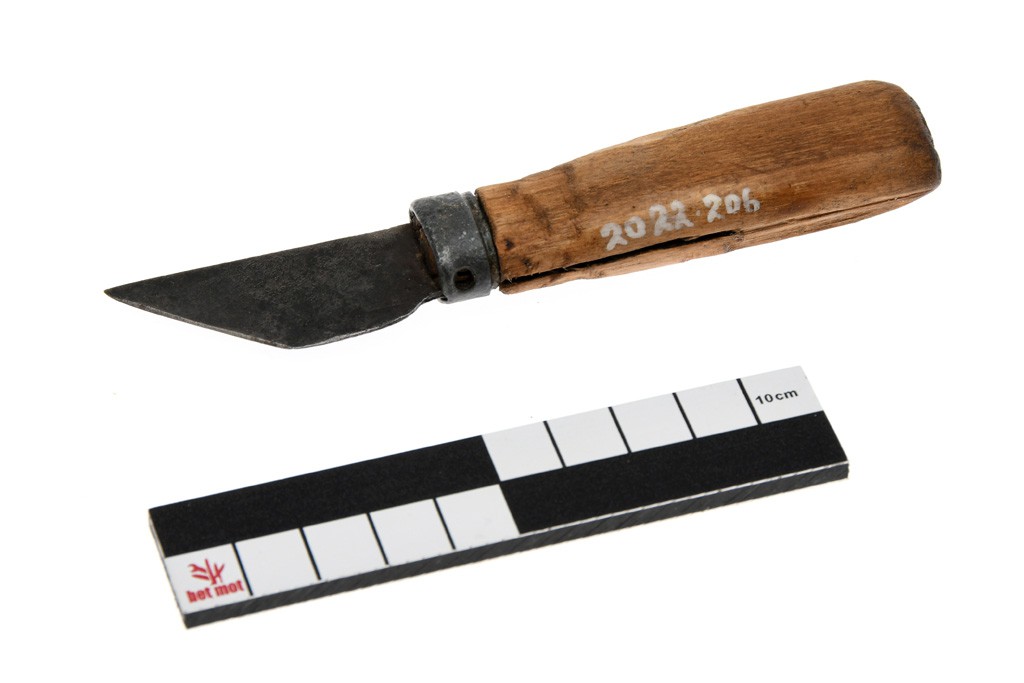
Tobacco knife
This text can only be consulted in Dutch
<https://www.mot.be/resource/Tool/tobacco-knife?lang=nl>
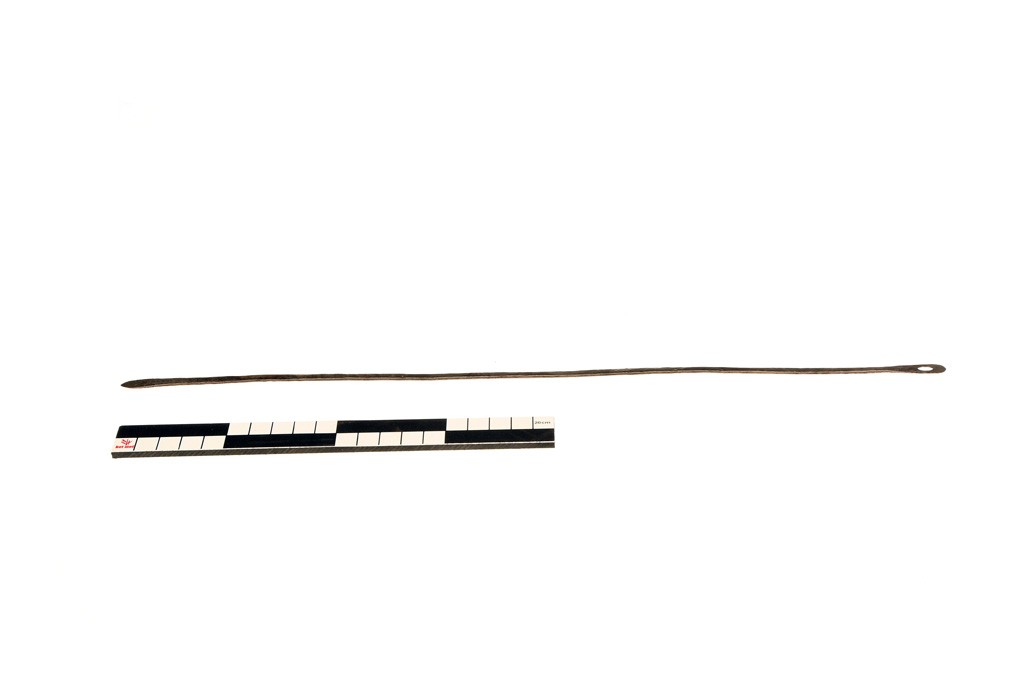
Tobacco needle
This text can only be consulted in Dutch
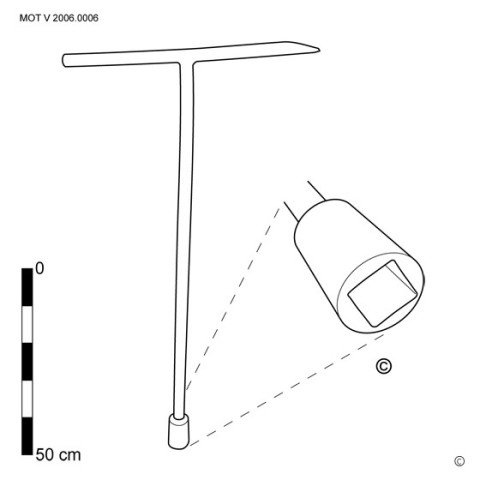
Toby key
This text can only be consulted in Dutch
<https://www.mot.be/resource/Tool/toby-key?lang=nl>
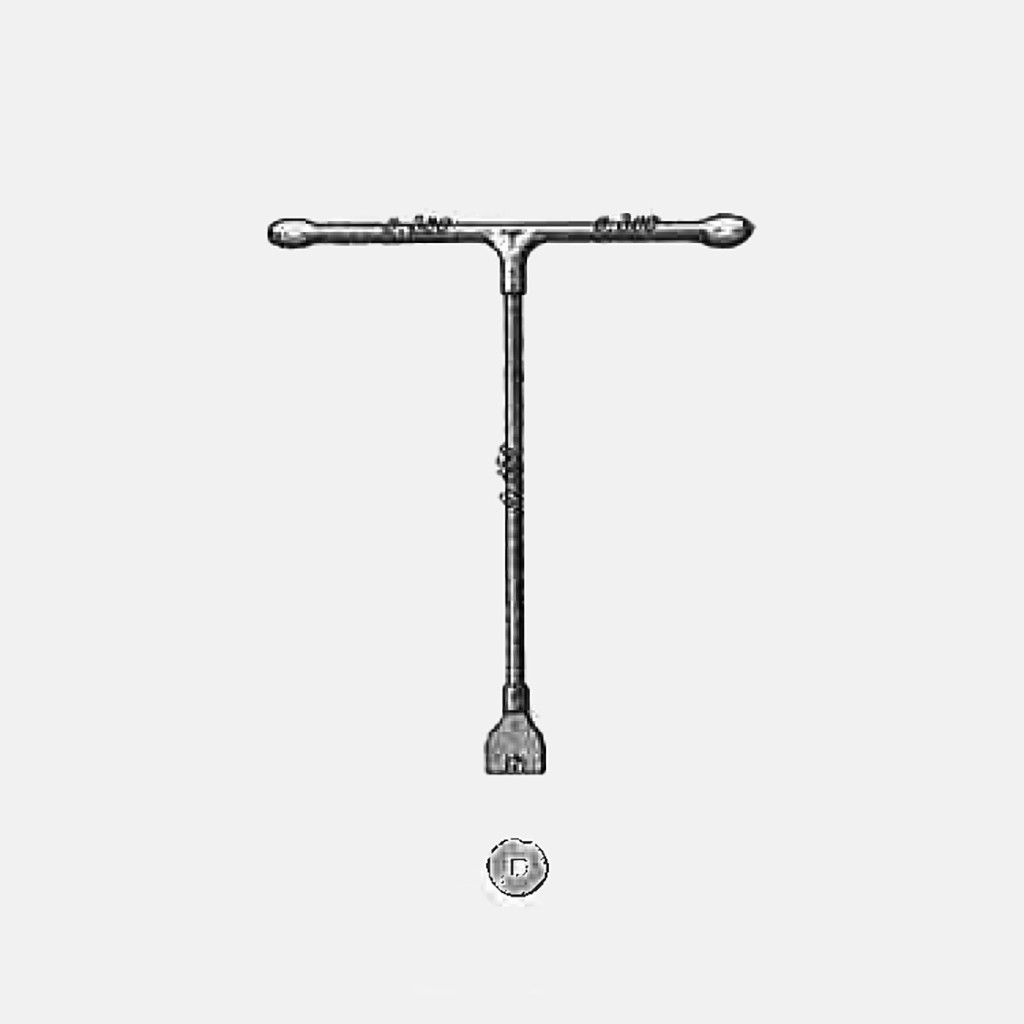
Toby key for Vignoles rail
This text can only be consulted in Dutch
<https://www.mot.be/resource/Tool/toby-key-for-vignoles-rail?lang=nl>
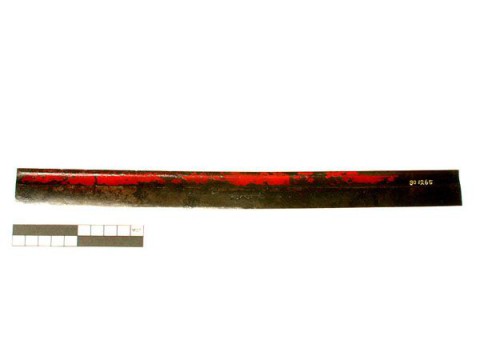
Toe knife
The toe knife is usually a full metal blade without handle, with a long
straight cut (between 15 and 35 cm); there is also a model with handle and
a short (approx. 7 cm) active part. The back of the toe knife is wide (5
mm), so that the farrier can hit it with his shoeing hammer. With the
knife, the excess horn is cut away from the horse's hoof. Thus, the hoof is
prepared for attaching a horseshoe. As for shape, confusion is possible
with a mason's tool to cut bricks to size. See also horse rasp. [MOT]
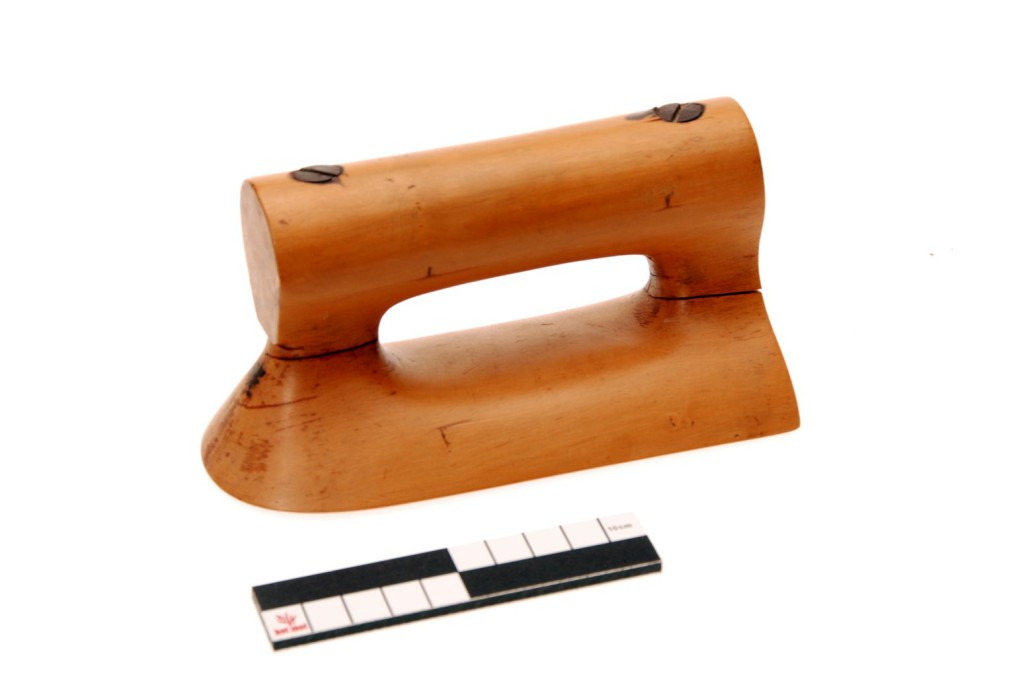
Tolliker
This text can only be consulted in Dutch
<https://www.mot.be/resource/Tool/tolliker?lang=nl>
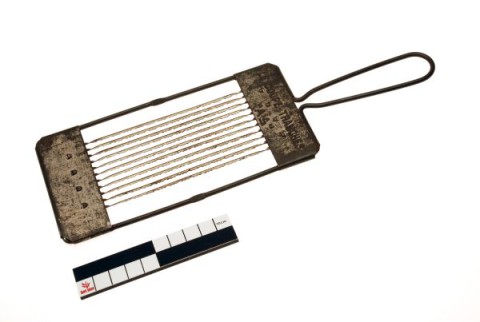
Tomato slicer
Tomatoes are cut into equal, thin slices with a tomato slicer. He has
eleven saw blades (approx. 10 cm long) in a rectangular window with a
straight handle. When you place the tomato slicer on top of the tomato, you
can cut it with a sawing movement. It can also be held at an angle while
the tomato is pushed back and forth over the saws slightly from above (1).
If necessary, there is an accompanying slide with which you can push the
last piece of the tomato through the slicer, without risk to the fingers.
[MOT] (1) CAMPBELL: 68.
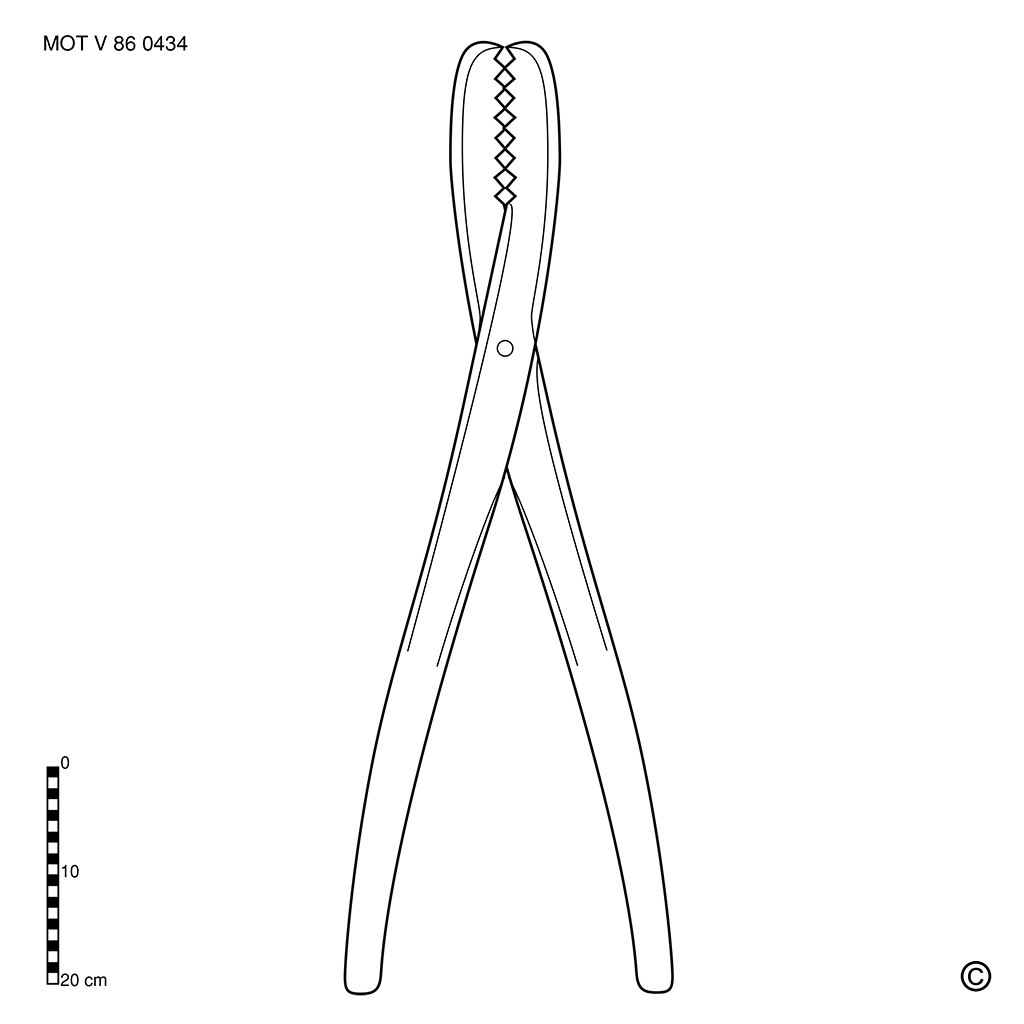
Tongs for removing thistles
The farmer can pull out weeds with long, deep roots such as thistles with
these thistle tongs. These large wooden tongs (approx. 90 cm) often have
ribbed jaws for a better grip. They are placed on the plant and carefully
pulled out. The roots are often very deep and break easily. It is therefore
best to perform this work when the soil is very moist and gives a little
bit. See also this weed extractor and the thistle spud. [MOT]
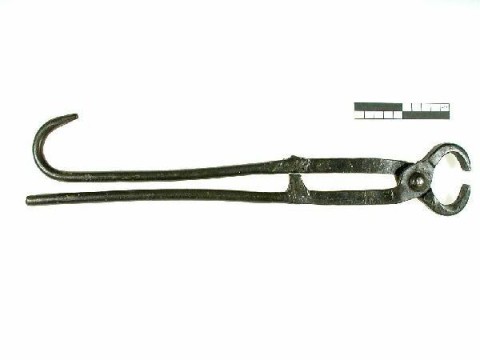
Tongs for tiles
Sometimes the roof tiler has to remove a piece of a roof tile in order to
install it. He often does this with a trowel (see mason's trowel), although
that is not an ideal treatment for that tool. Some tilers therefore use
pliers that resemble large carpenter's pincers. However, the rafter has
narrower jaws, which do not close completely because a rod between the arms
keeps them at a certain distance from each other. Often one arm ends in a
hook to hang the pliers from a roof bar when not in use. See also tile
pincers and marble pincers. [MOT]
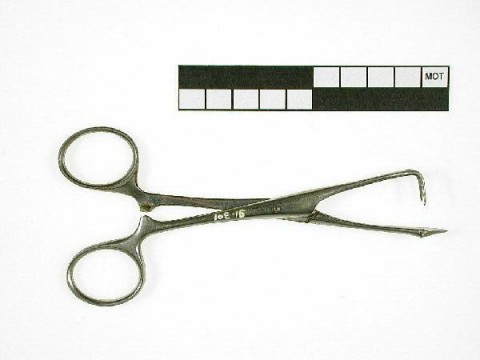
Tongue pliers
This text can only be consulted in Dutch
<https://www.mot.be/resource/Tool/tongue-pliers?lang=nl>
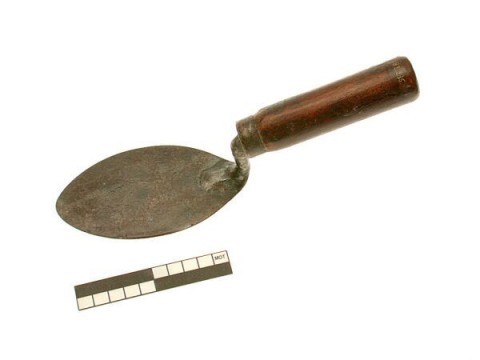
Tongue trowel
Hand tool with a rounded, elongated (approx. 13-20 cm) blade that protrudes
into an upwardly curved handle. The tool is used by the bricklayer and
plasterer. Can be distinguished from this trowel, but has a wider blade
(approx. 4-7 cm). [MOT]
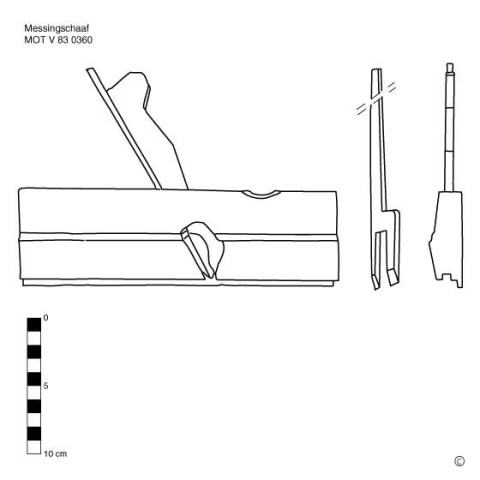
Tongueing plane
This text can only be consulted in Dutch
<https://www.mot.be/resource/Tool/tongueing-plane?lang=nl>
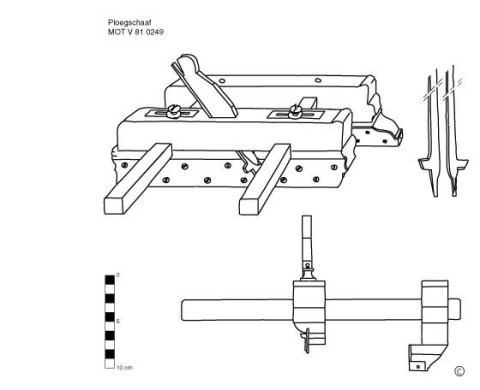
Tongueing plane
This text can only be consulted in Dutch
<https://www.mot.be/resource/Tool/tongueing-plane-2?lang=nl>
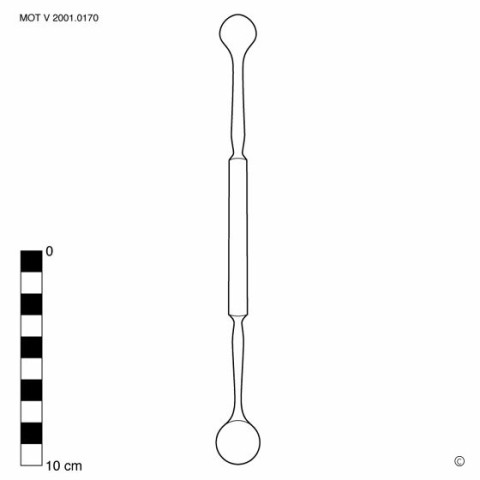
Tonsil elevator
This text can only be consulted in Dutch
<https://www.mot.be/resource/Tool/769?lang=nl>
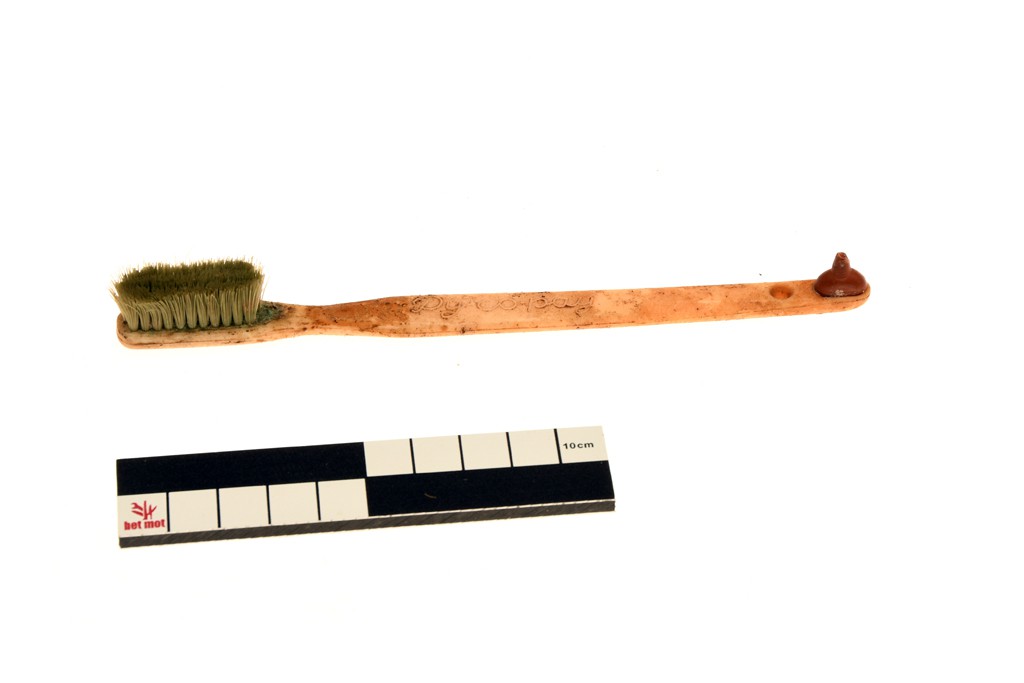
Tooth brush
This text can only be consulted in Dutch
<https://www.mot.be/resource/Tool/tooth-brush?lang=nl>
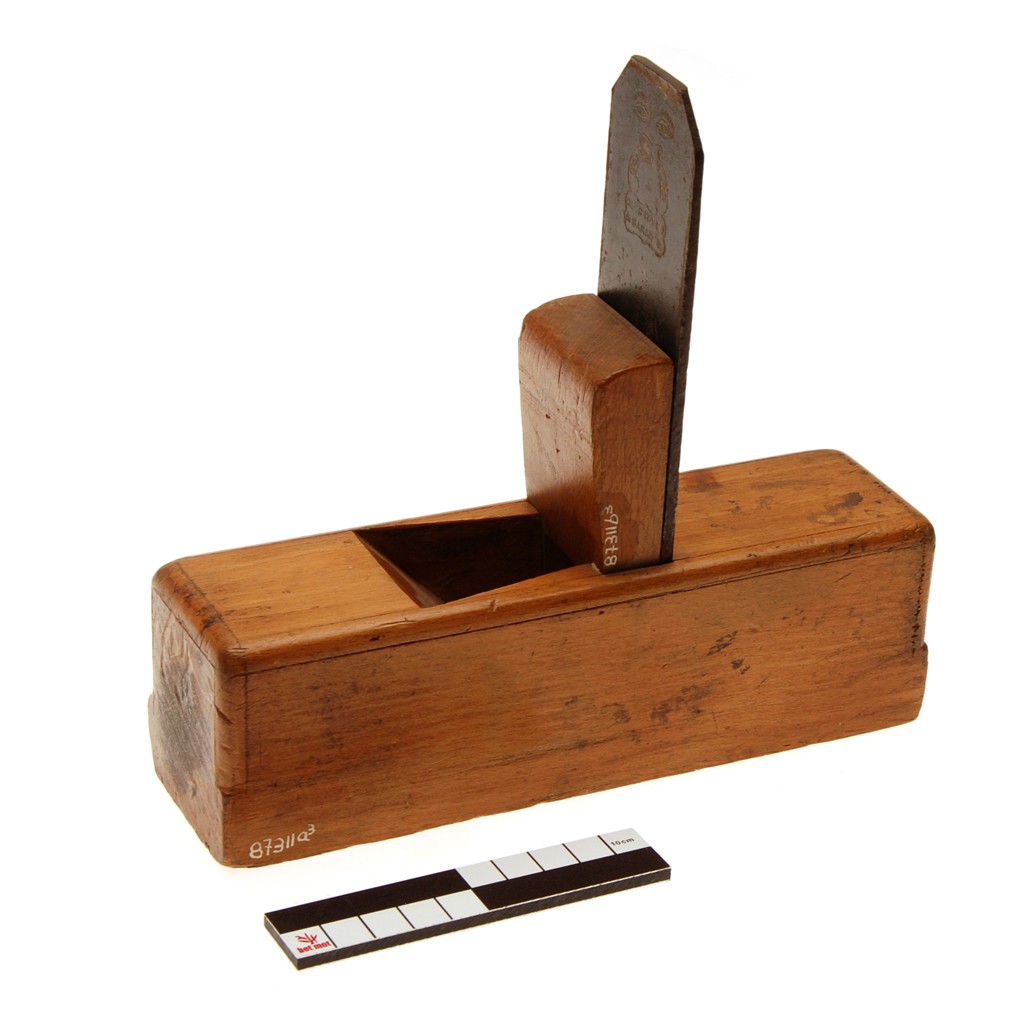
Toothing plane
This text can only be consulted in Dutch
<https://www.mot.be/resource/Tool/toothing-plane?lang=nl>
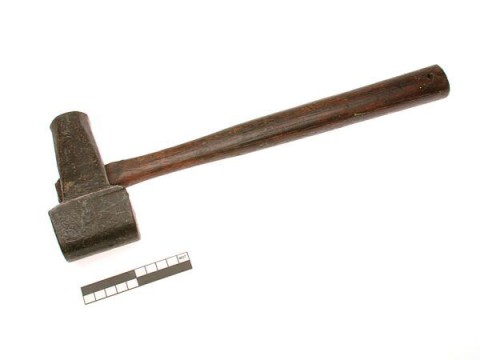
Top fuller
This text can only be consulted in Dutch
<https://www.mot.be/resource/Tool/top-fuller?lang=nl>
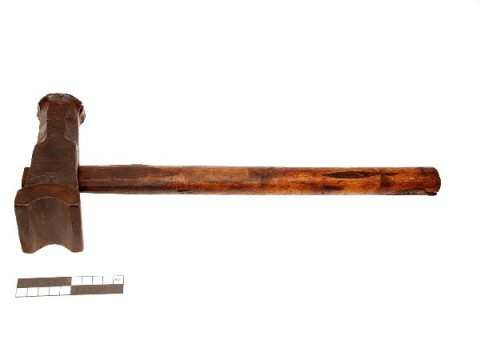
Top swage
This text can only be consulted in Dutch
<https://www.mot.be/resource/Tool/top-swage?lang=nl>
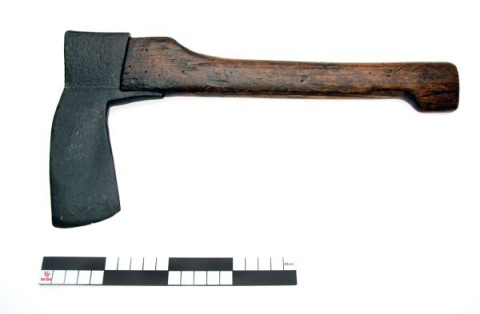
Topping axe
When cutting down large trees, it is sometimes necessary to remove their
crowns first to prevent the tree from hanging, to reduce weight and prevent
cracking, etc. This is usually done with a topping axe. It is a light axe
of about 0.8 to 1.5 kg with a relatively narrow (6.5-7 cm) and long (20-27
cm) blade, on a handle of 40-50 cm. The specialized craftsman is on his
climbing irons and is stopped by a rope. He usually works with one hand. If
the lumberjack does the work himself, he often uses the woodman's axe.
[MOT]
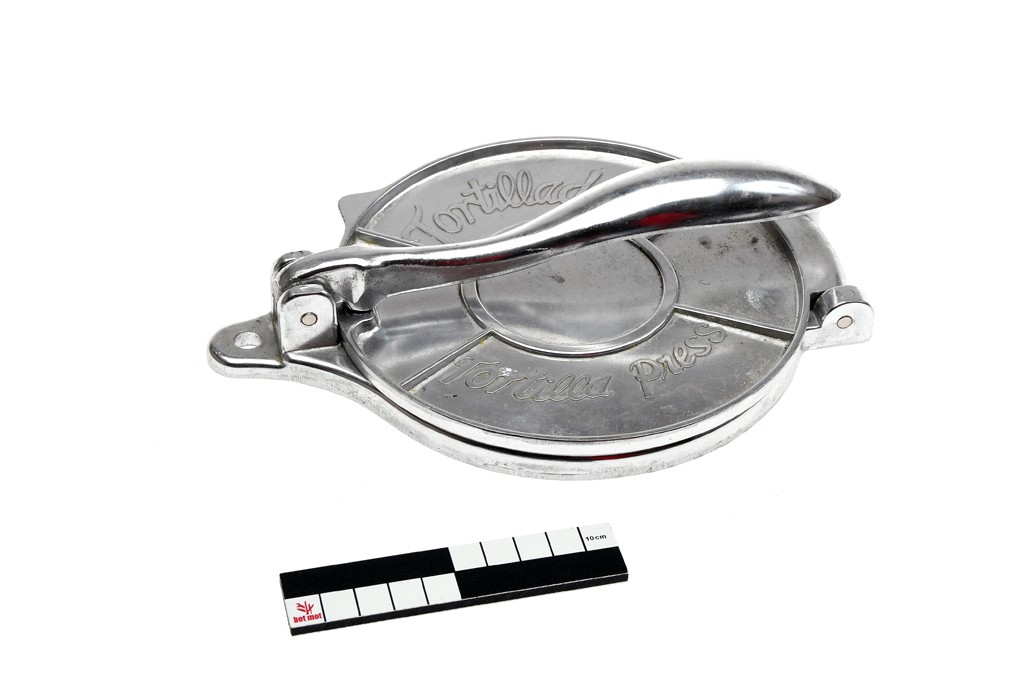
Tortilla press
This text can only be consulted in Dutch
<https://www.mot.be/resource/Tool/tortilla-press?lang=nl>
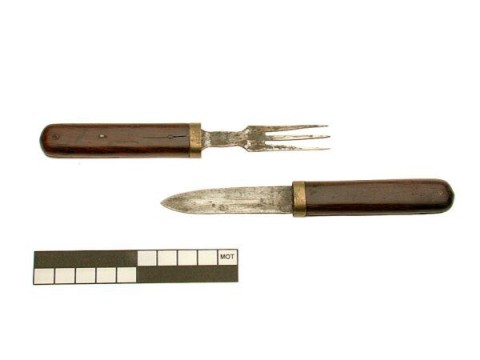
Tourists'set
If you need a knife and fork while traveling, this tourists' set is a
solution. It consists of a knife and a dinner fork, which are held together
during transport by sliding them together, connecting them with a clasp or
by putting them in a pouch. In some cases there is also the option to store
a tablespoon (1). See also the camping knife and pocket knife. [MOT] (1)
Eg. "Richard Abr. Herder stahlwaren- und werkzeugfabrik'': 189.
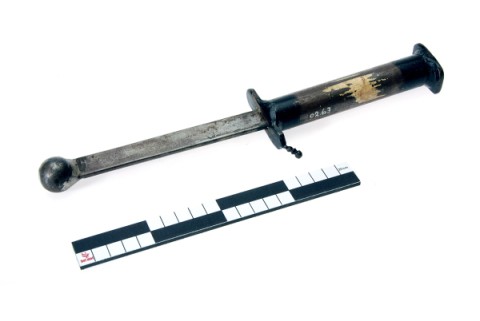
Training fighting knife
This text can only be consulted in Dutch
<https://www.mot.be/resource/Tool/training-fighting-knife?lang=nl>
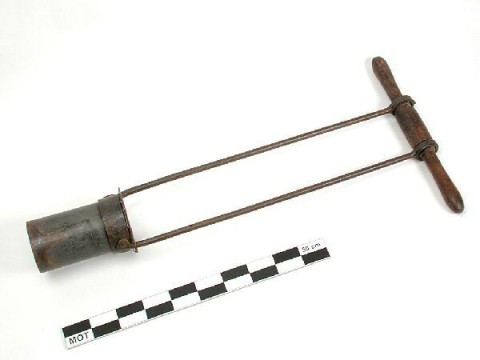
Transplanter
This text can only be consulted in Dutch
<https://www.mot.be/resource/Tool/transplanter?lang=nl>
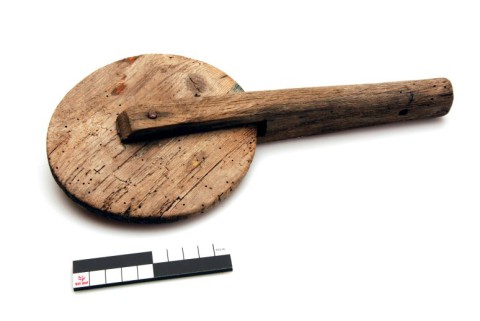
Traveller (wheelwright)
Measuring tool consisting of a disc or wheel (approx. 20 cm) that rotates
on an axis fixed in an iron or wooden handle. Disc or wheel can be made of
wood, iron or a combination of both (1). Usually there is a radial mark.
After the wheelwright has driven the rims on the spokes (see also spoke
dog) the wheel returns to the blacksmith to be ironed. That craftsman
measures the circumference of the wheel by rolling the traveller over the
wheel and transferring the same number of rotations to the iron band. Then
he can chop or cut it to the desired length. The tracing wheel is also used
sporadically by the millwright when covering the millstone with iron hoops.
See also the wheeled verge cutter. [MOT] (1) NEDERLOF: 20.
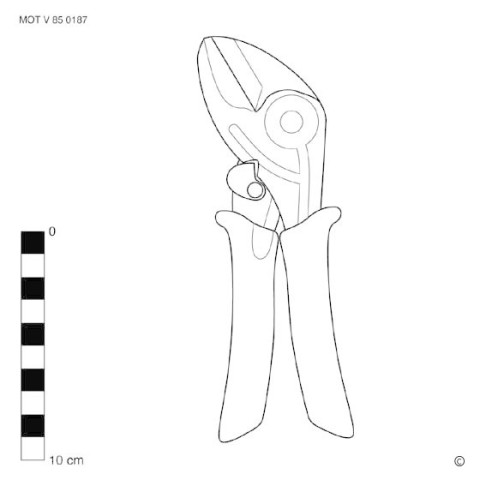
Tree pruner
This text can only be consulted in Dutch
<https://www.mot.be/resource/Tool/tree-pruner?lang=nl>
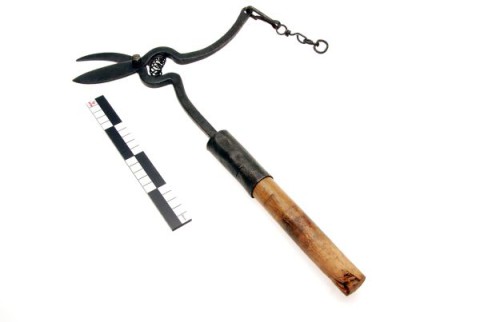
Tree pruning shears
This text can only be consulted in Dutch
<https://www.mot.be/resource/Tool/tree-pruning-shears?lang=nl>
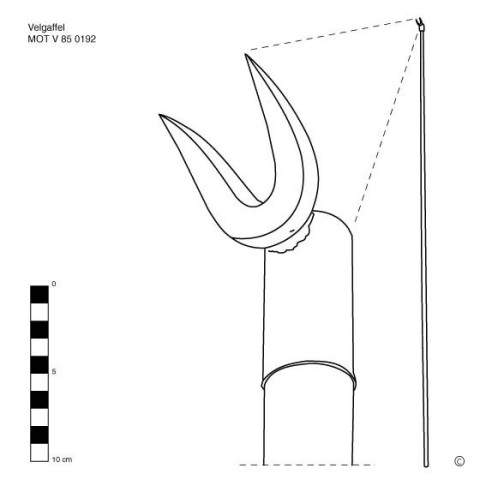
Tree-felling gaff
This text can only be consulted in Dutch
<https://www.mot.be/resource/Tool/tree-felling-gaff?lang=nl>
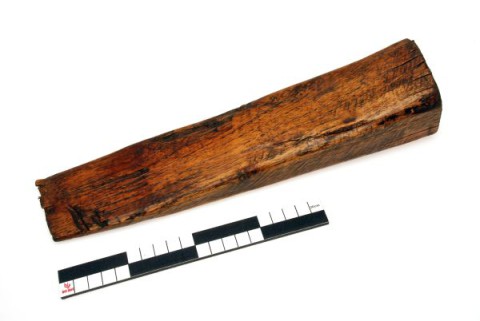
Tree-felling wedge
The felling wedge is an approx. 30 cm long wooden wedge that is driven into
the saw cut when felling thick trees to prevent the saw from jamming and to
make the tree fall in the right direction. Usually two or three are used
together. These wedges can also prevent the saw from jamming when cutting
the felled tree into pieces. A splitting wedge is sometimes used instead of
the felling wedge. [MOT]
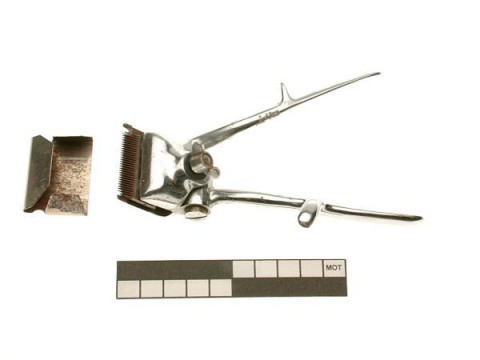
Trimmer (hairdresser)
This text can only be consulted in Dutch
<https://www.mot.be/resource/Tool/trimmer-hairdresser?lang=nl>
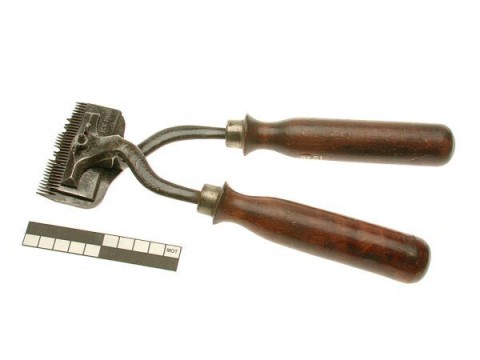
Trimmer for horses and cattle
In addition to the hairdresser's trimmer, and those for dogs and sheep,
there is a larger model for horses and cattle. It is quite heavy (almost
400 gr) and is used with both hands. Two metal arms, which rotate on a
spindle, each end in turn in a rectangular blade, which is mounted either
forwards or sideways. The lower rectangular blade is larger (about 8 cm by
4 cm) than the top one (about 7.5 cm by 3.5 cm) and both have 32 teeth for
the horses on the upper long side. By moving the arms apart or together,
the serrated blades slide horizontally over each other. The hair that ends
up between the teeth is cut off in no time. The same model but with 17
teeth is used for cattle. See also the dog dresser's knife and the trimmer
for dogs and sheep. [MOT]
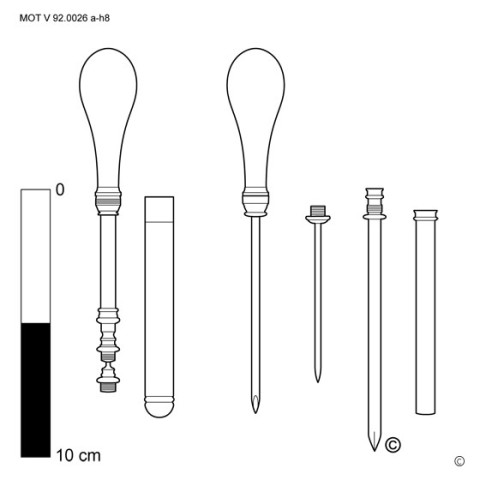
Trocar
This text can only be consulted in Dutch
<https://www.mot.be/resource/Tool/trocar?lang=nl>
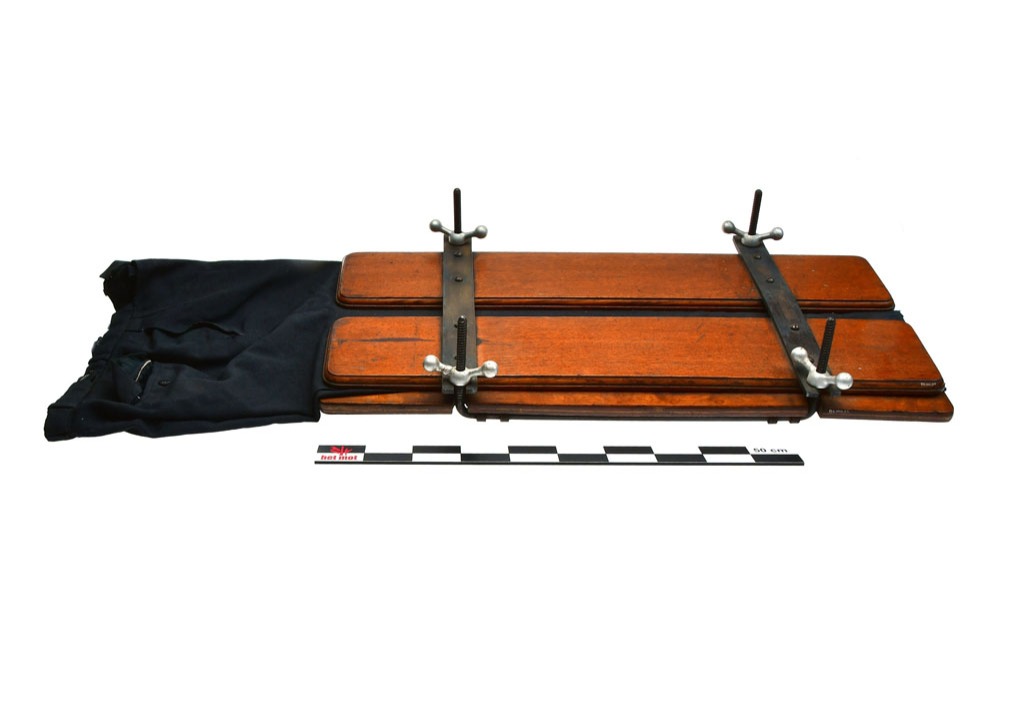
Trouser press
This text can only be consulted in Dutch
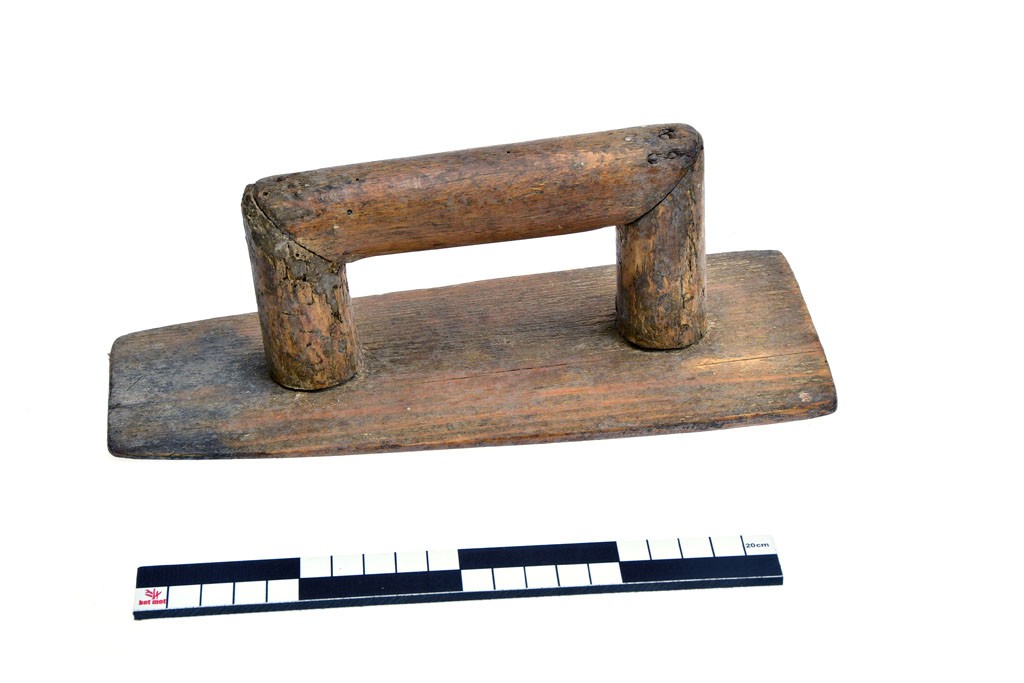
Trowel board
This text can only be consulted in Dutch
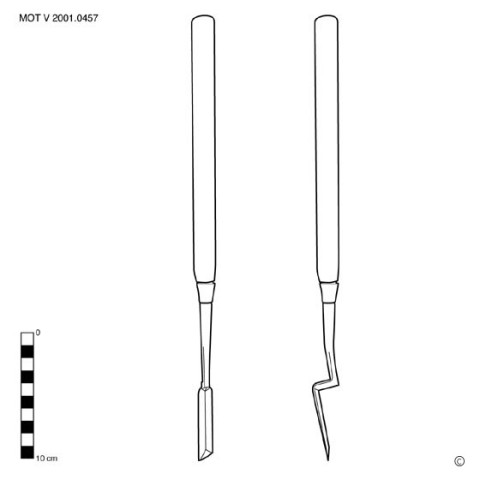
Trowel chisel (Japanese)
This text can only be consulted in Dutch
<https://www.mot.be/resource/Tool/trowel-chisel-japanese?lang=nl>
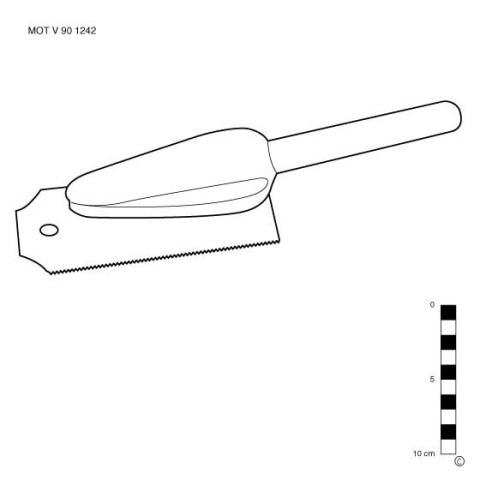
Trowel saw
This text can only be consulted in Dutch
<https://www.mot.be/resource/Tool/trowel-saw?lang=nl>
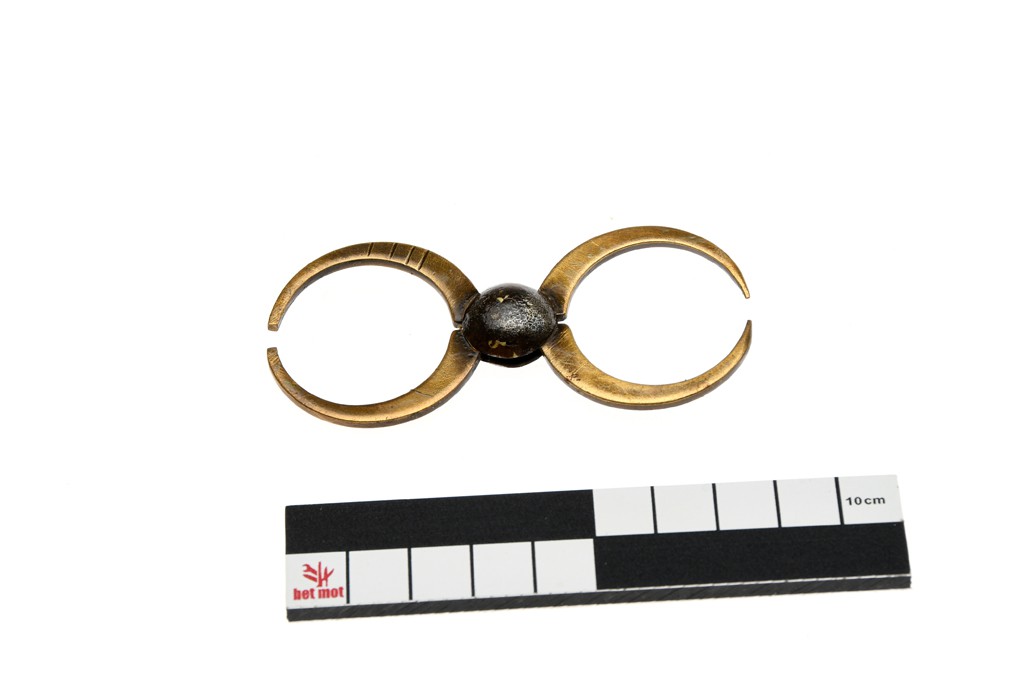
Truing caliper
This text can only be consulted in Dutch
<https://www.mot.be/resource/Tool/truing-caliper?lang=nl>
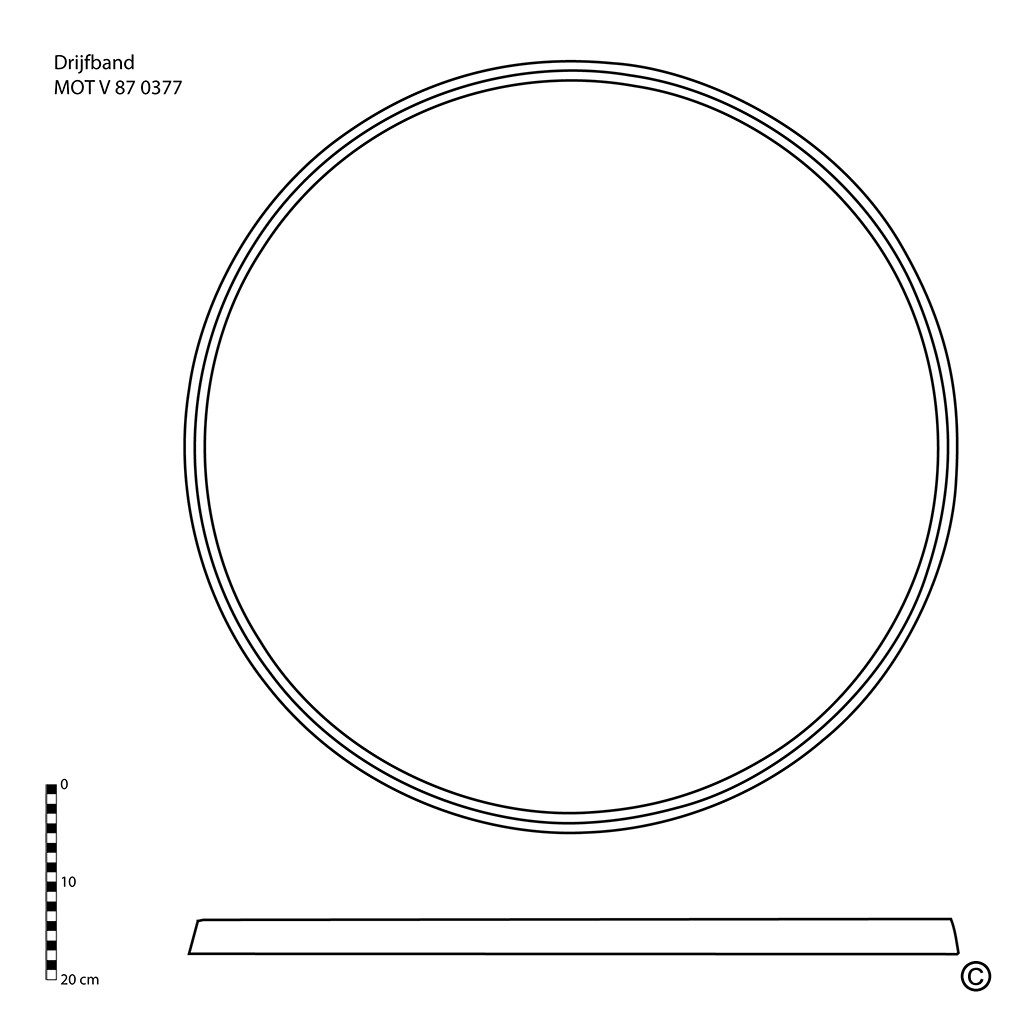
Truss hoops
This text can only be consulted in Dutch
<https://www.mot.be/resource/Tool/truss-hoops?lang=nl>
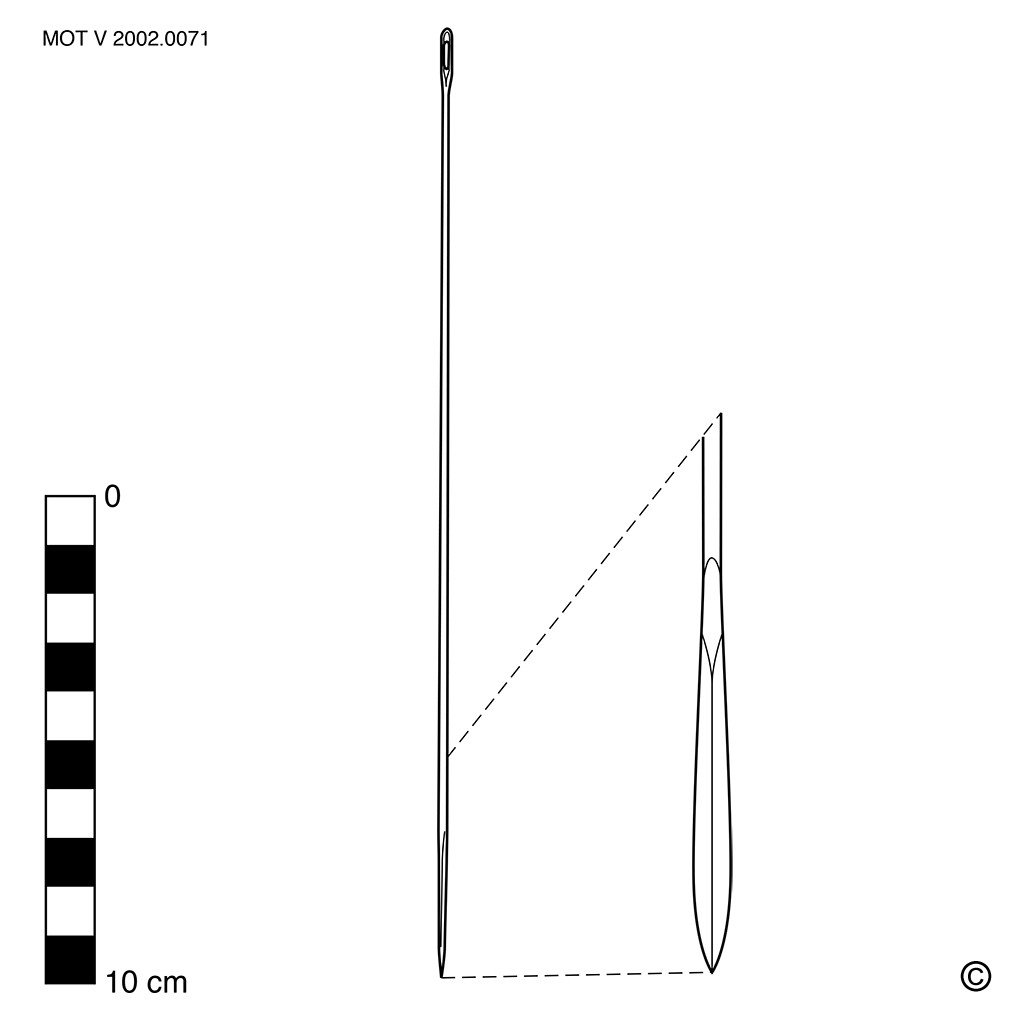
Trussing needle
This text can only be consulted in Dutch
<https://www.mot.be/resource/Tool/trussing-needle?lang=nl>
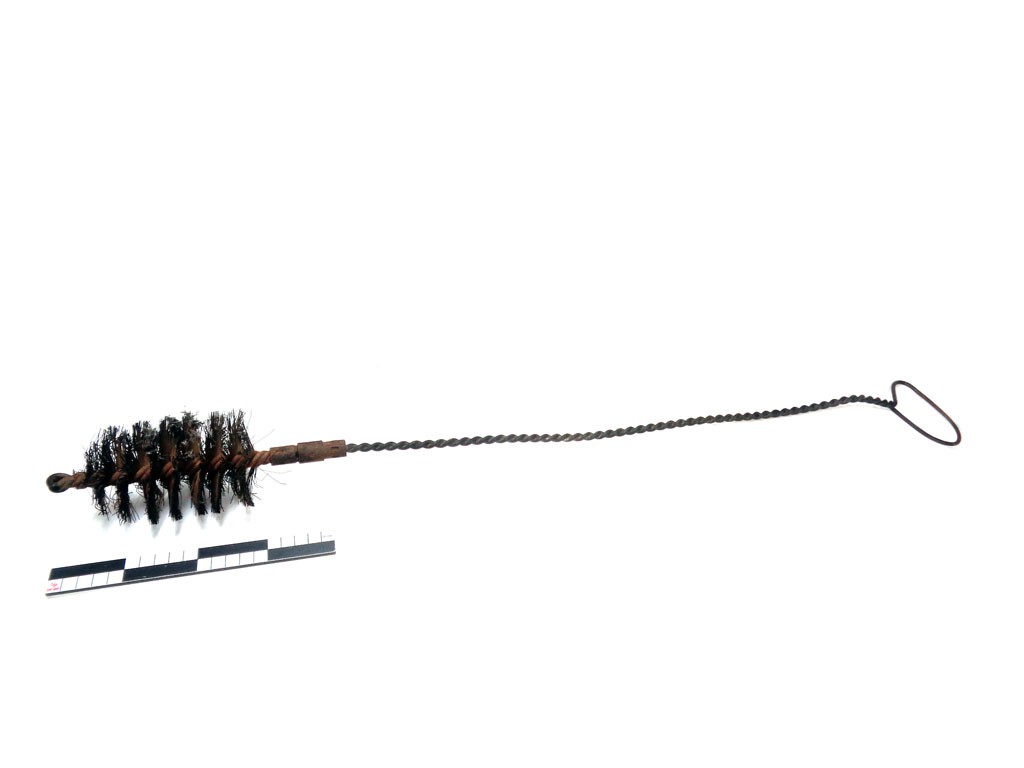
Tube brush
This text can only be consulted in Dutch
<https://www.mot.be/resource/Tool/tube-brush?lang=nl>
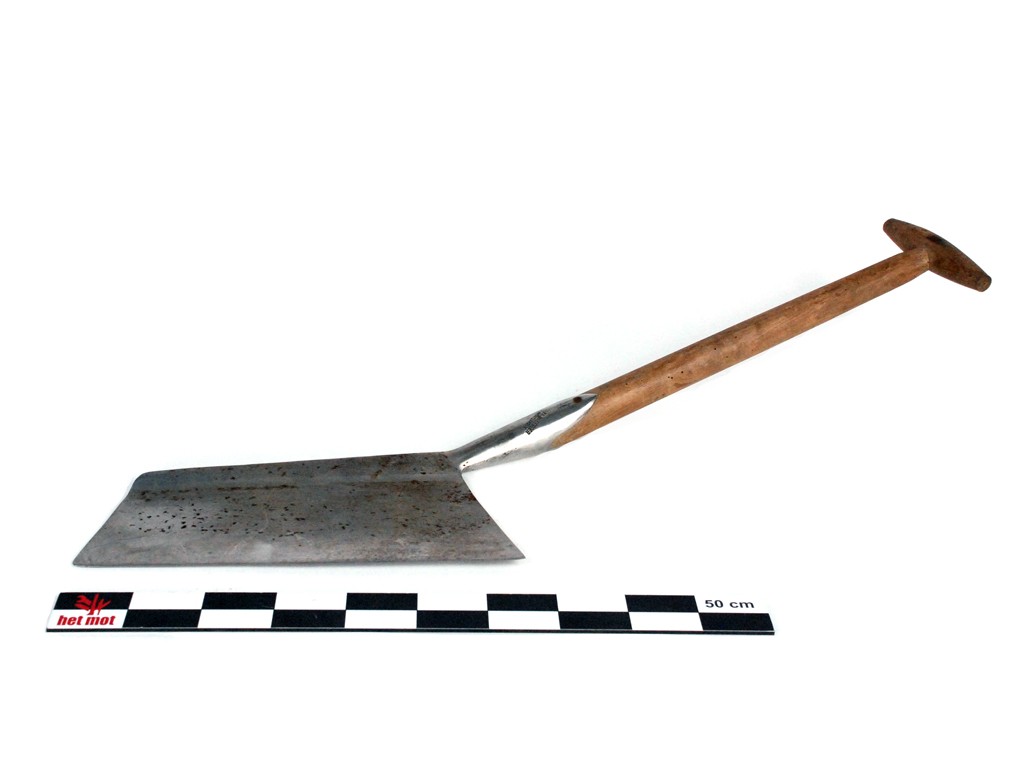
Tulip lifting spade
This text can only be consulted in Dutch
<https://www.mot.be/resource/Tool/tulip-lifting-spade?lang=nl>
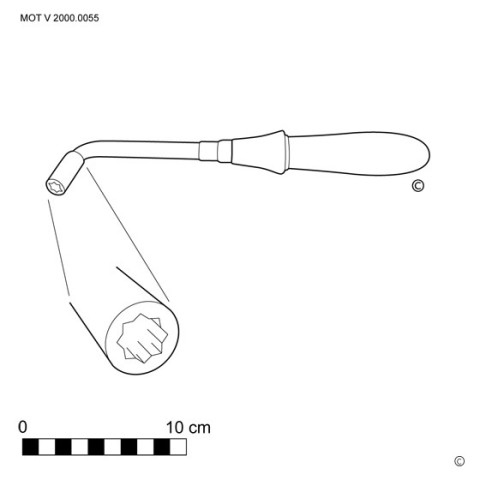
Tuning key
This text can only be consulted in Dutch
<https://www.mot.be/resource/Tool/tuning-key?lang=nl>
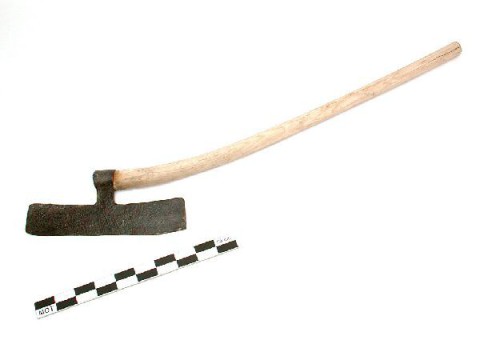
Turf cutting axe
Axe with large, heavy and thick (approx. 5 mm), rectangular (approx. 40 cm
by 10 cm) or crescent-shaped (1) iron blade that is connected to a long
(approx. 100 cm) curved stem. The cut of the blade and the tip of the stem
form an angle of about 45 °. The turf cutting axe serves to cut through the
sod - with tough roots - in superficial peat extraction, but also, for
example, where a trench will be dug with the spade to lay drainage pipes
(see drain ladle and pipe layer). When cutting turf to protect dikes or
embankments, a turf axe is also often used to divide the area of the meadow
into long strips, which are then cut across with the garden spade and then
loosened with the paring spade (2). Such an axe is also sometimes used as a
dung axe, to cut through the caked manure of the stable. See also the
flauchter spade and sod cutter. [MOT] (1) Eg. DEBY from DAVID 1975: 140.
(2) Eg. FRICK & CANAUD: 508.
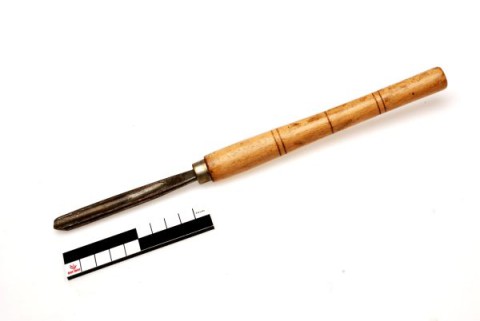
Turner's gouge
The gouge is the turner's most important tool: he transforms the shape of a
wooden object with different gouges. The wheelwright also uses it to form
the wheel hub. [MOT]
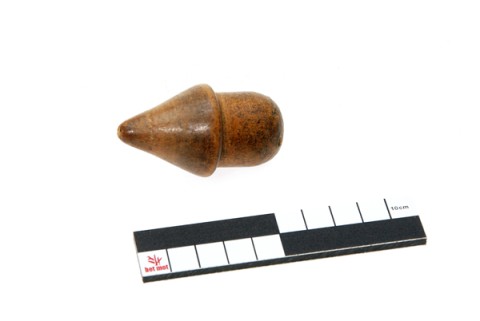
Turnpin
This text can only be consulted in Dutch
<https://www.mot.be/resource/Tool/340?lang=nl>
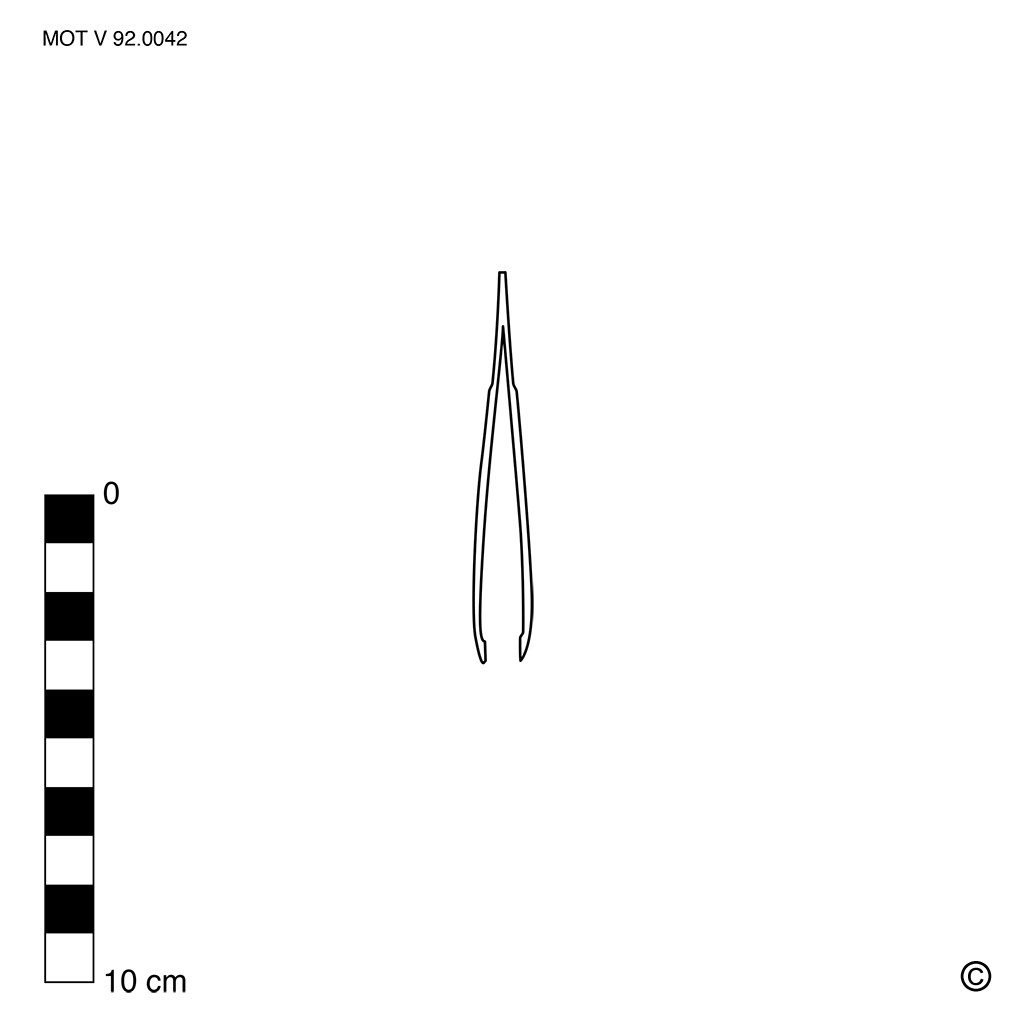
Tweezers
This text can only be consulted in Dutch
<https://www.mot.be/resource/Tool/tweezers?lang=nl>
